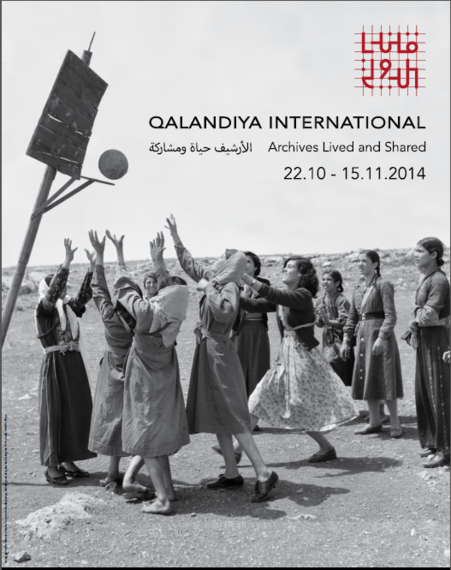
Young girls at the Women's Activity Centre in Qalandiya playing a game of basketball during the 1950. Courtesy of UNRWA Archive.
Vita brevis, arts longa. Perhaps no circumstance better reflects this now than the second edition of the Qalandiya International. Otherwise known as the Palestine Biennial, it will run from October 22 - November 15. Weathering the region's tumultuous climate, this cultural celebration will occur in cities, towns, and villages throughout Palestine. It will feature over 100 artists and include a slate of educational programing. These events will take place at nine partner institutions. Each of which has contributed funds to finance the event. Programs include artist talks and seminars. They will include local and international speakers, installations, interventions, conceptual and video art, and public performances.
It's one thing to mount an exhibition of this nature in exile, in London, Paris, or New York. There, it's about the work and the context in which it was made. To mount such an exhibition in what amounts to a war zone is unique and heroic. The choice of the Biennial's name, Qalandiya, is significant. It refers to the notorious checkpoint that isolates Palestine from Jerusalem and the rest of the world. For Palestinians, it's a daily reminder of unimaginable violence and suffering. It also refers to pre-Occupation Palestine. It was the original name of its local airport. It refers to a refugee camp as well as a since-divided village.
Showcasing how past events has shaped Palestine's current story, the exhibitions and programs contribute to the theme "Archives, Lived and Shared." They consolidate and reaffirm Palestine's paradoxical identity, to Palestinians as well as to the rest of the world. All this represents a show of force. It demonstrates how artists and cultural institutions can create a mosaic of solidarity across a occupation-decimated country. It aims to engage viewers, to get them to look at art as something not just documentary but living, useful, and hopeful.
Organizing institutions include Al-Ma'mal; the A. M. Qattan Foundation; Arab Culture Association in Haifa; International Academy of Art Palestine; Khalil Sakakini Cultural Centre; Palestinian Art Court - Al Hoash; Ramallah Municipality; Riwaq and the Palestinian Museum. QI is also in partnership this year with MinRASY PROJECTS, Windows and Iltiqa for Contemporary Art in Gaza and Al-Mashghal (the Factory) in Haifa.
Call it a form of resistance. Call it a template for collective action against future or otherwise ongoing crises. Sometimes just continuing, against all odds, to make, exhibit, and look at art is the most defiant thing an artist and his or her fellow citizens can do.
